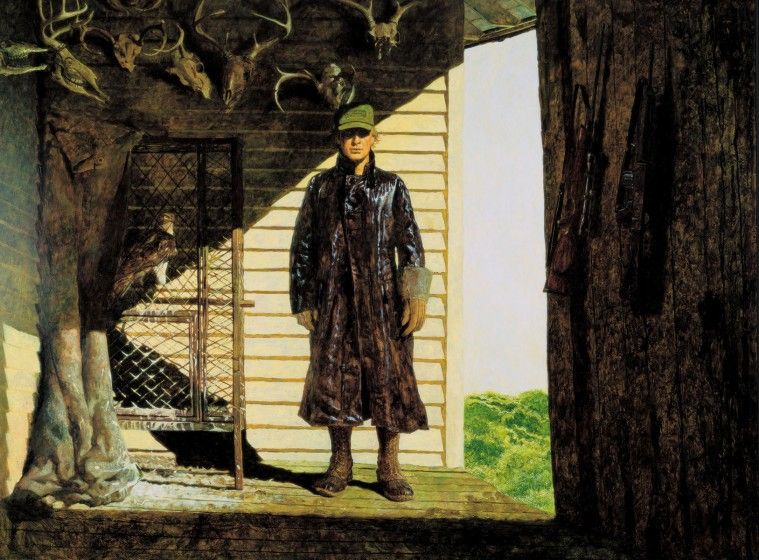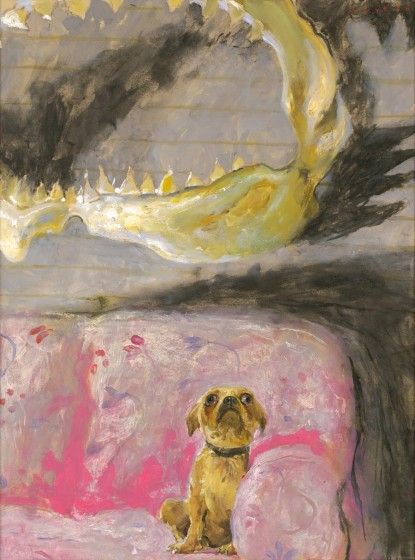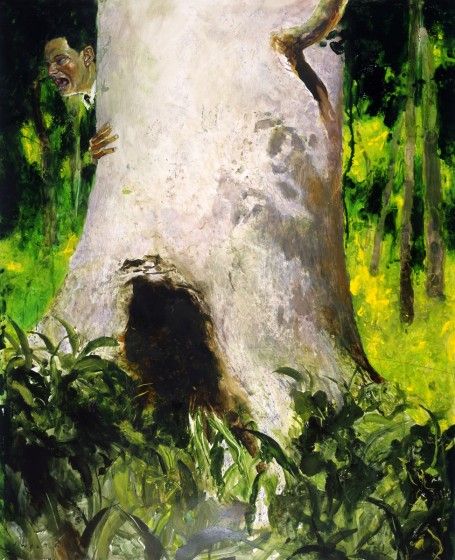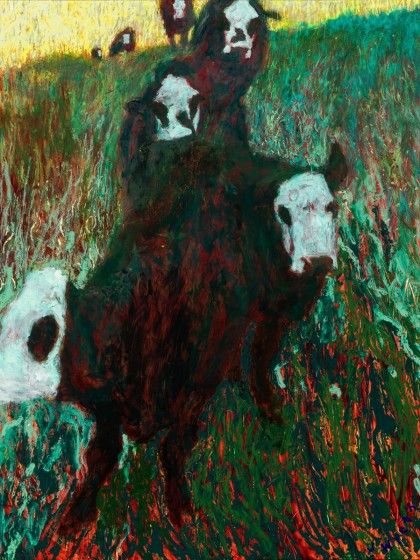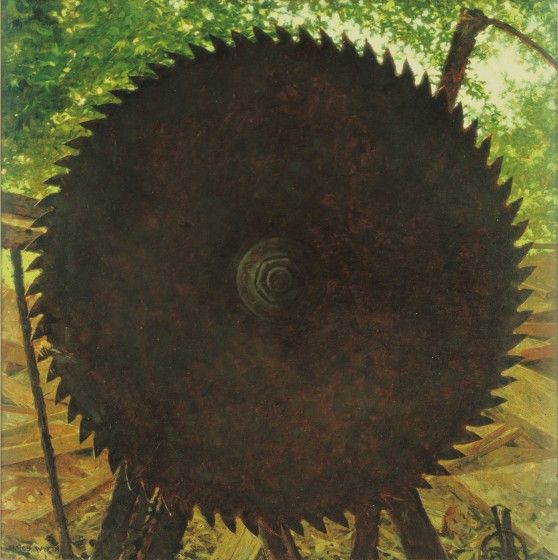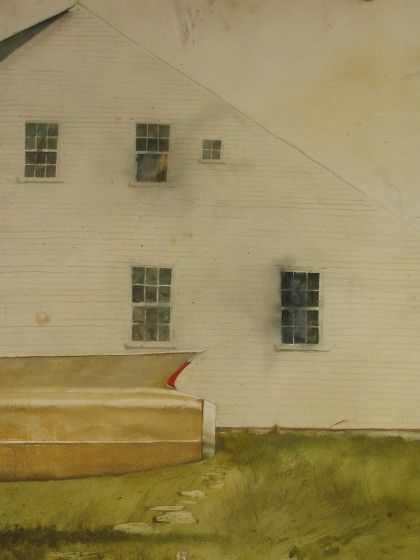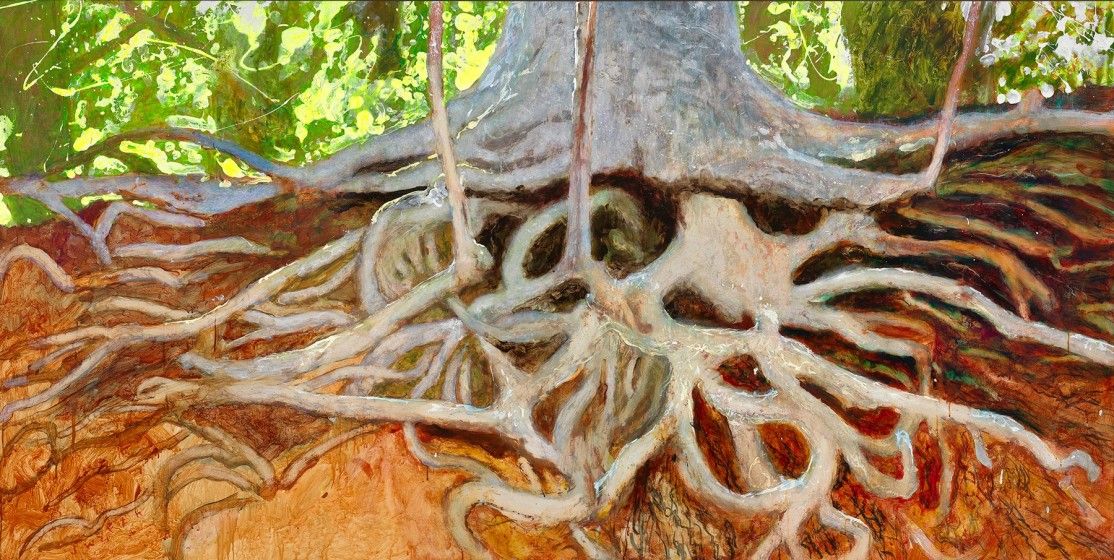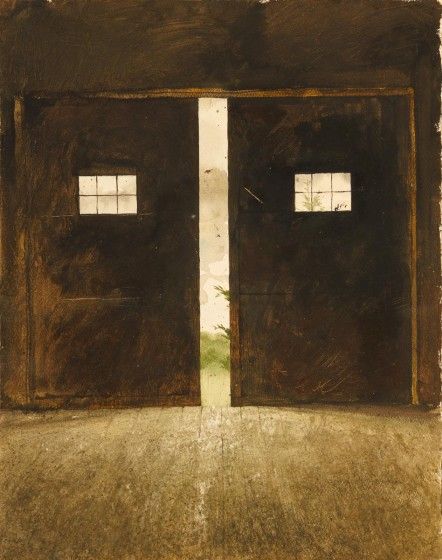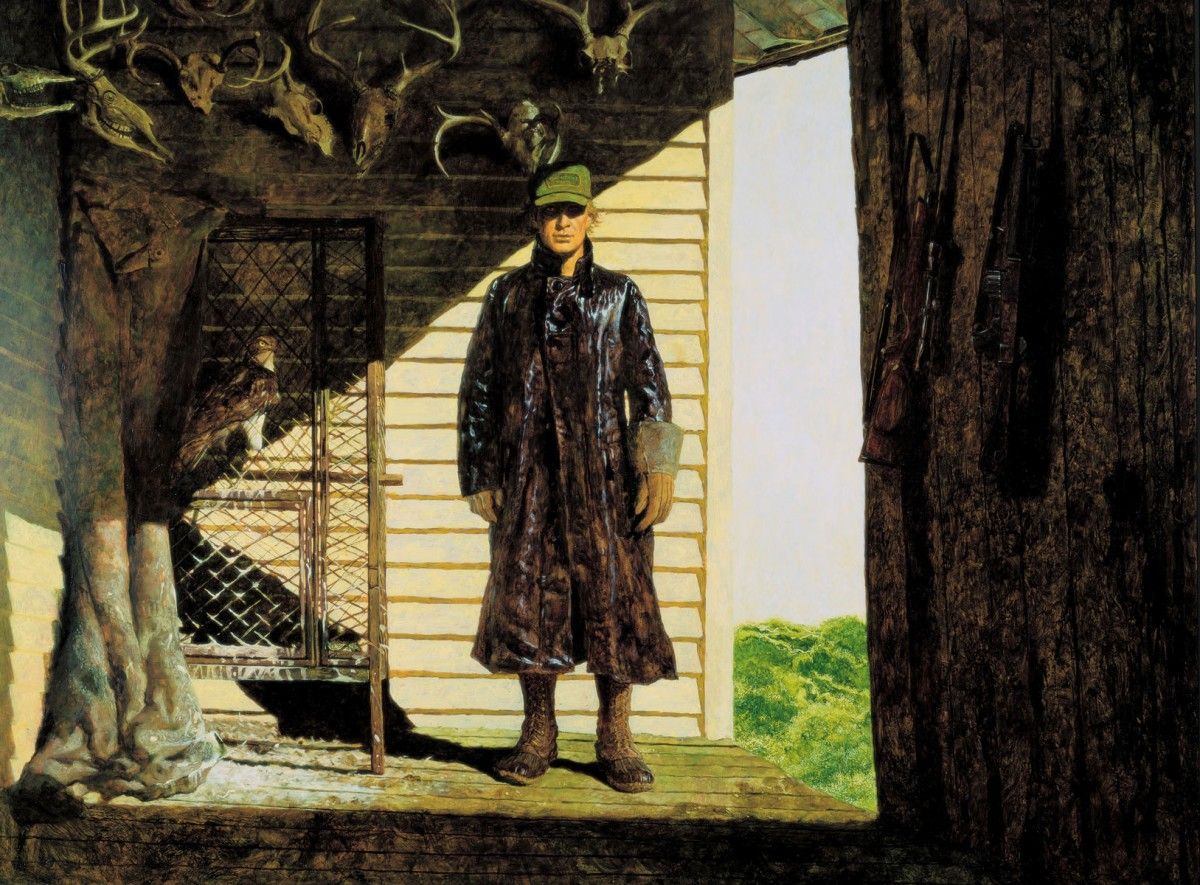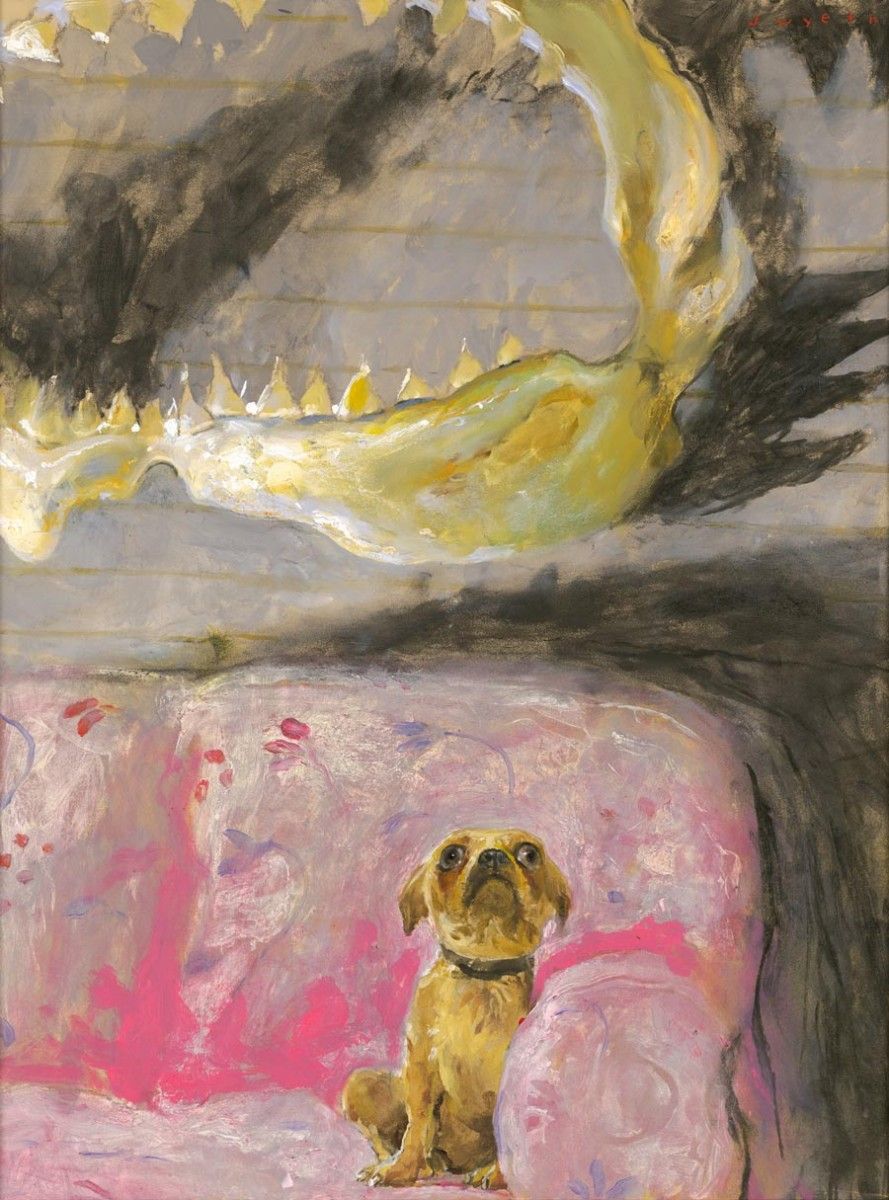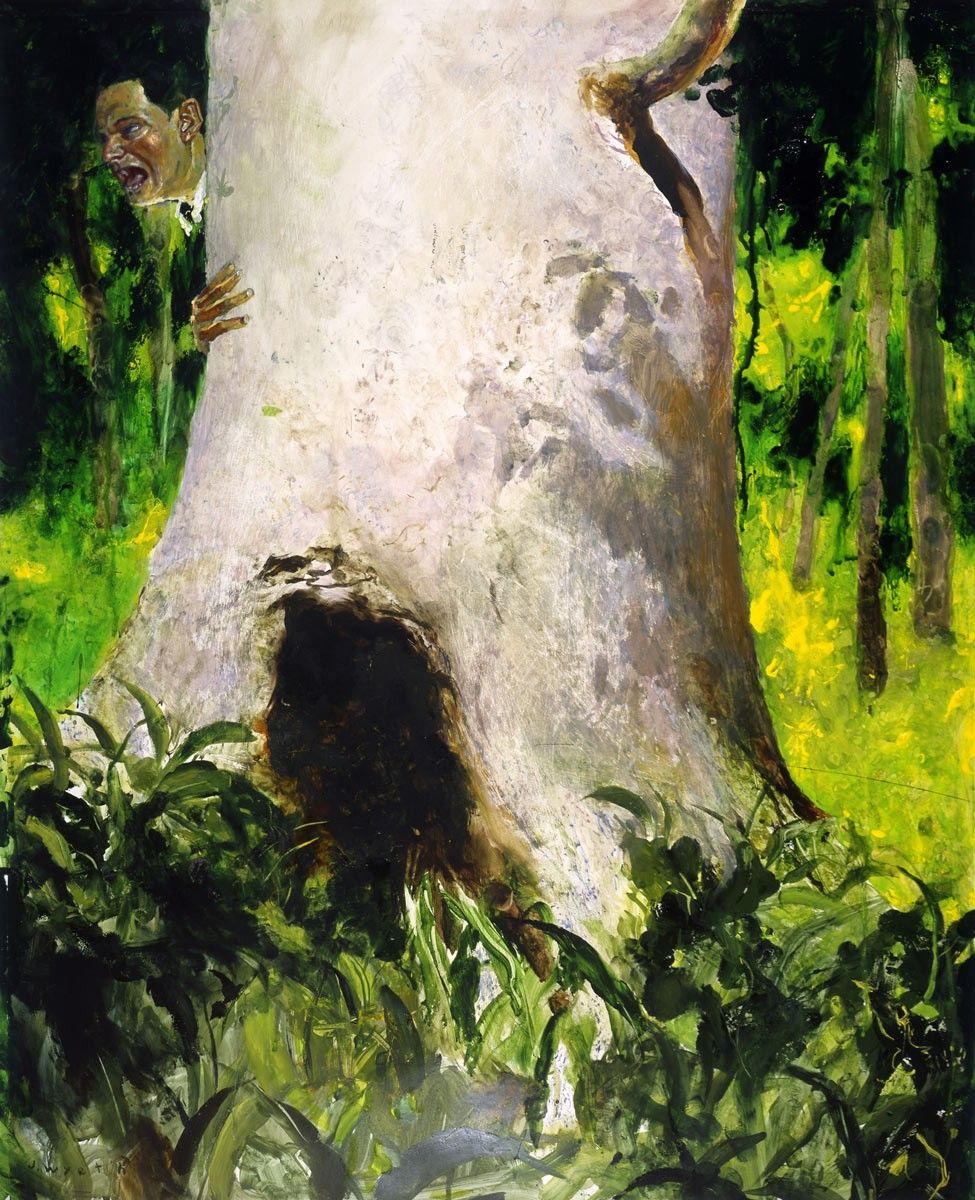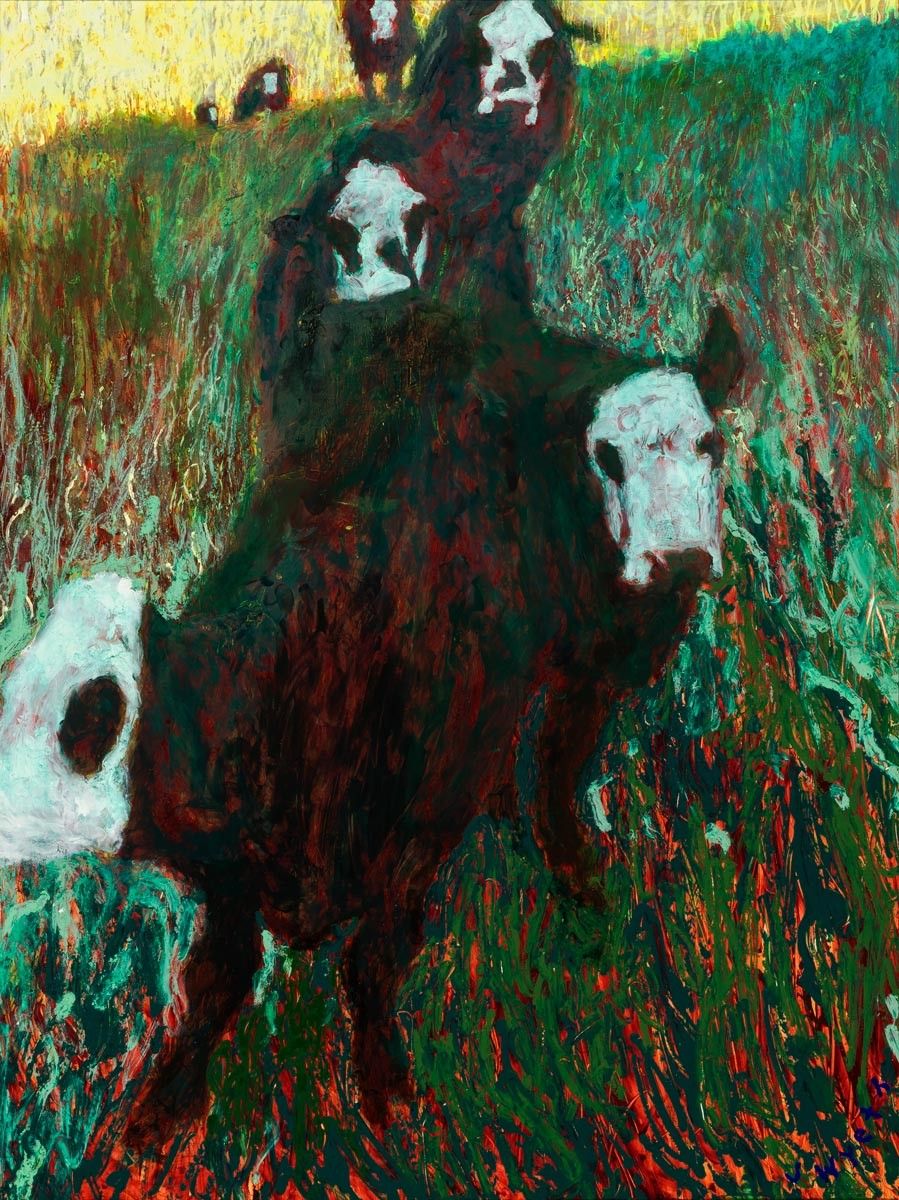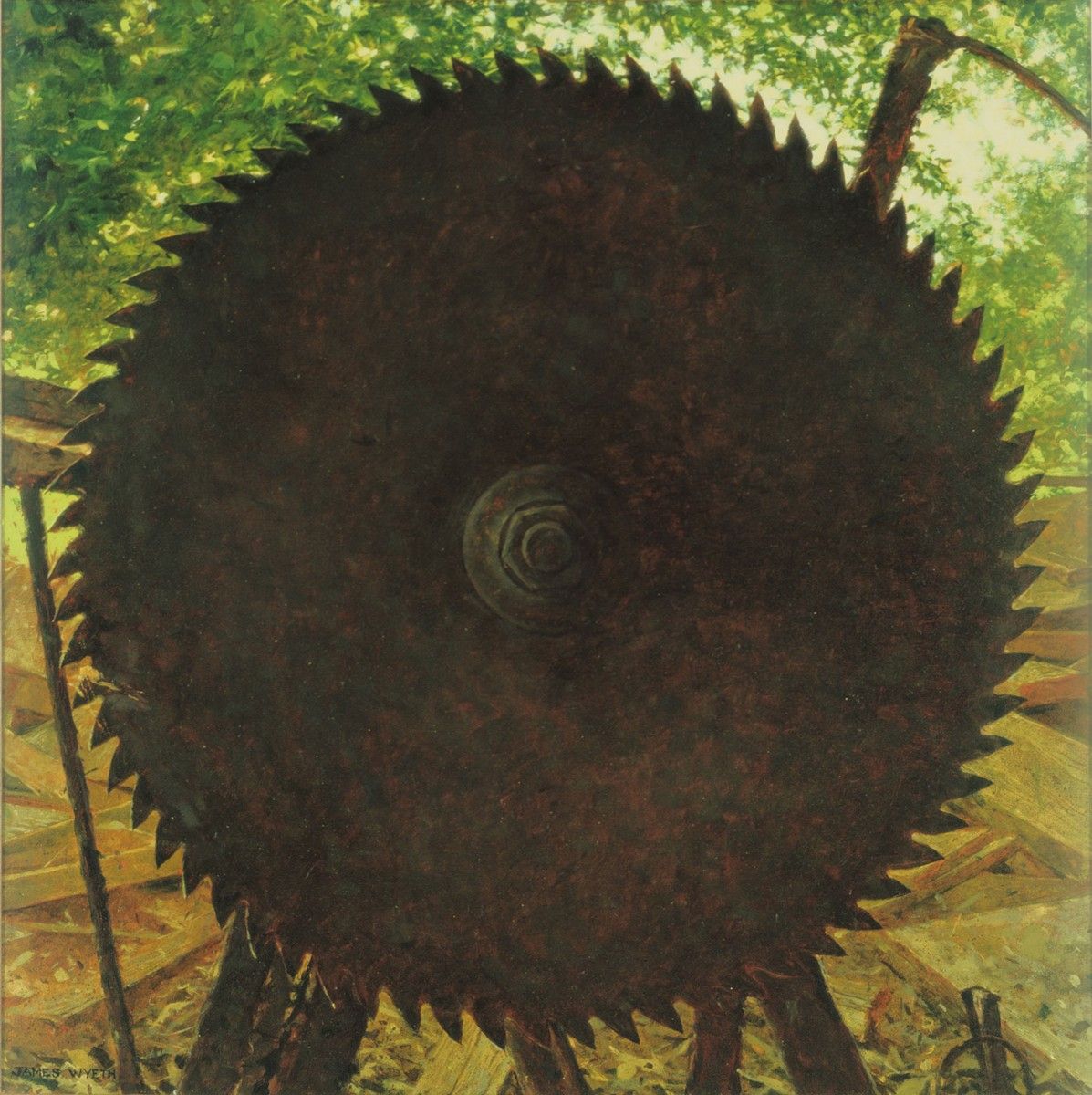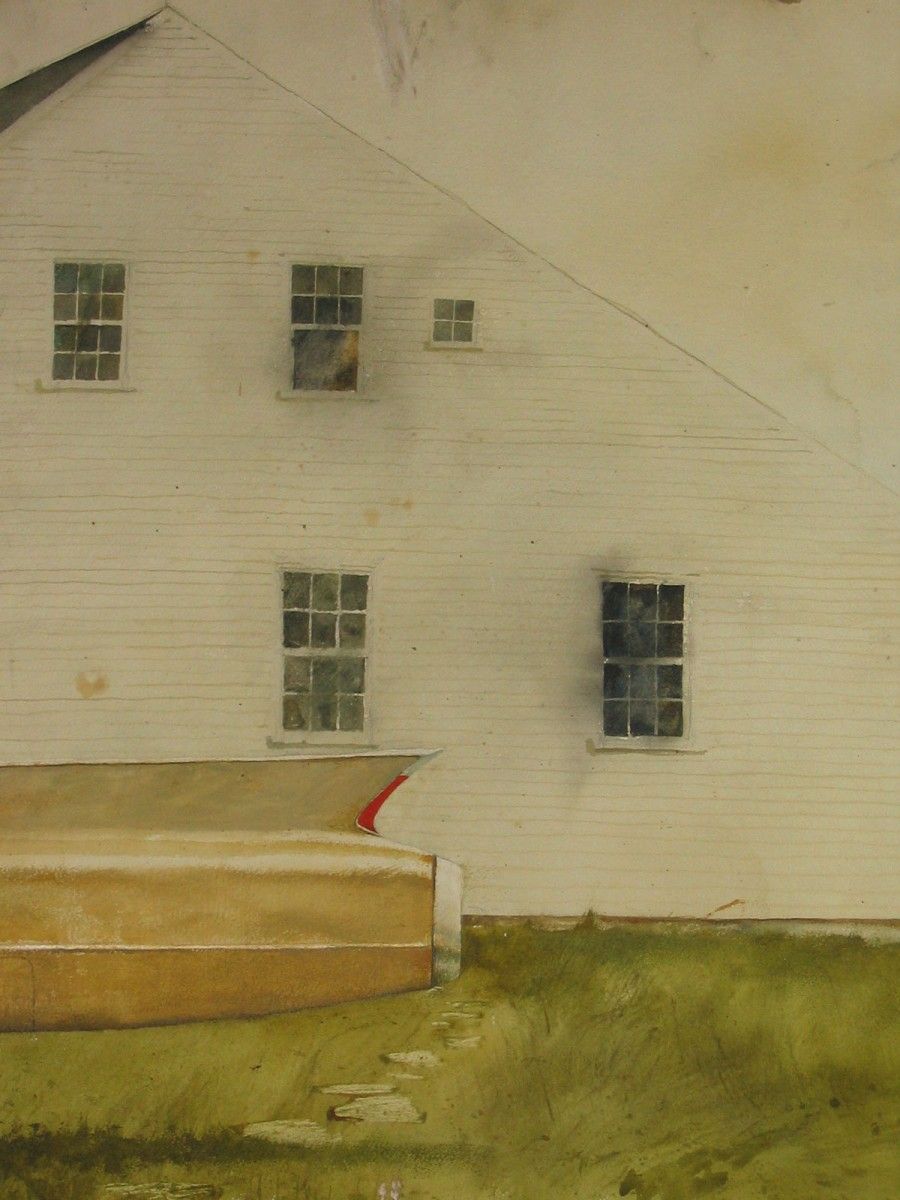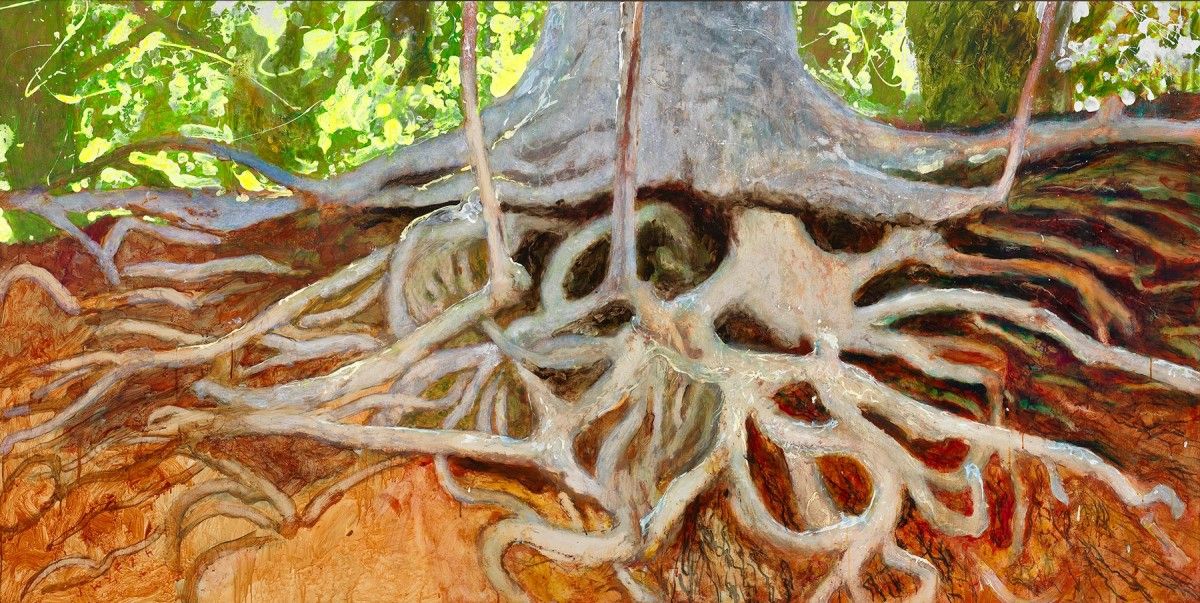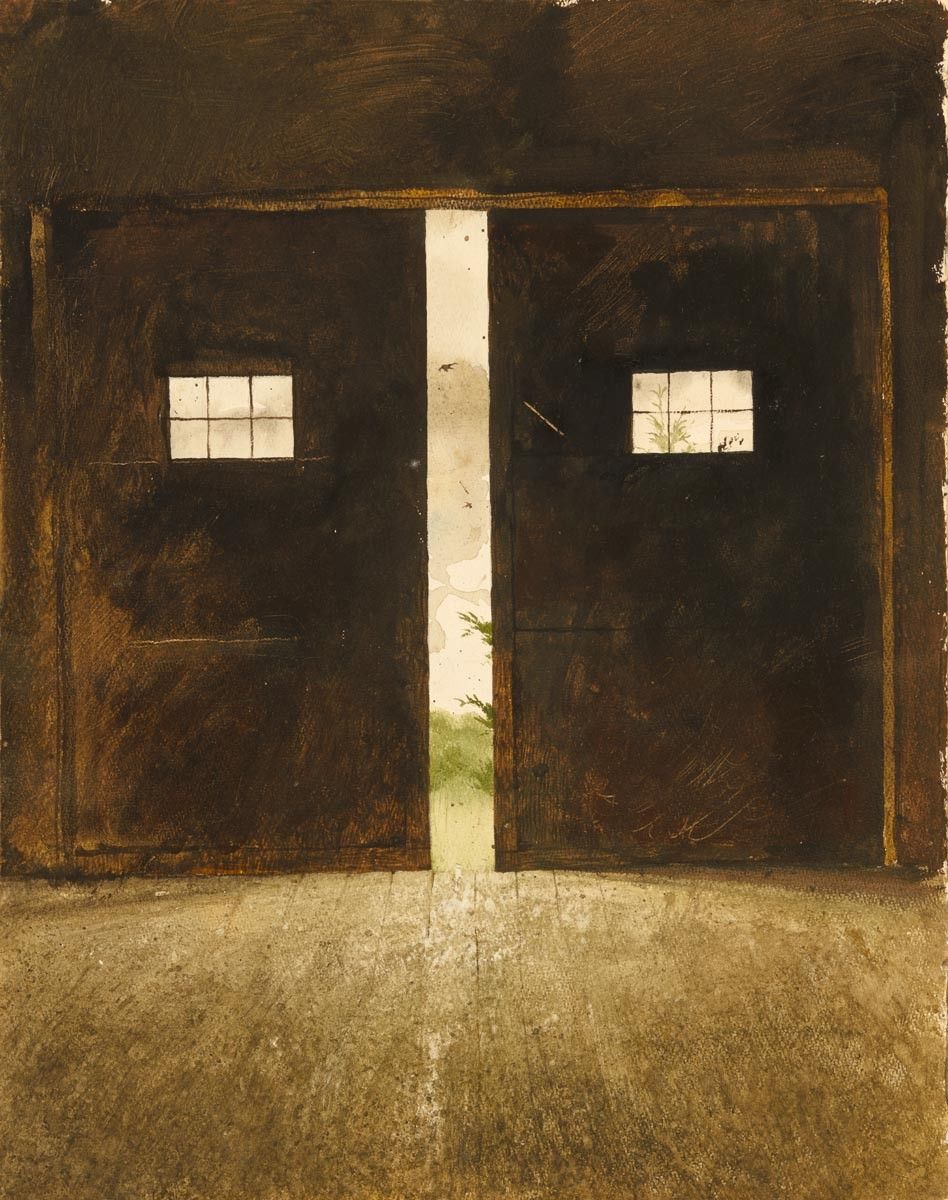This exhibition traces a persistent vein of intriguing, often disconcerting imagery over the career of renowned artist Jamie Wyeth (b. 1946). Frequently countered and even hidden by Wyeth’s fuller body of work—particularly his well-known coastal views and farmscapes—the darker and more troubling imagery is constant throughout his oeuvre. Whether he is introducing curious characters or surveying strange landscapes, Wyeth is at home with uneasy subjects and a master of the unsettled mood.
Among the goals of this examination of Wyeth’s work is the intentional disentanglement of his work from that of other family members. Looking at Jamie Wyeth’s work in isolation may still suggest affinities with the darker work by other generations of his family, such as the grim story of The Drowning (1936) by N.C. Wyeth or the frozen corpse of Karl Kuerner in Andrew Wyeth’s Spring (1978), but it does not form the starting point of the investigation. Not intended as a retrospective, the exhibition will follow the development of Wyeth’s skillful, cinematic shorthand that has the power of creating a sense of anxiety in the viewer. A focused look at Wyeth’s arresting, visceral imagery will provide fascinating insight into the artist and the art of visual storytelling. Fiercely independent in the face of prevailing art world trends, Jamie Wyeth stands apart in a shadowy and strange world of his own creation.
The exhibition will be accompanied by a major catalogue published by Rizzoli Electa, with a lead essay by Amanda C. Burdan, Senior Curator at the Brandywine Museum of Art and organizer of this exhibition. Burdan has selected artists working in different media to contribute essays exploring their own creation of unsettling moods; they are John Rusk writing on filmmaking, Rena Butler writing on choreography, Michael Kiley writing on sound installations, and Jennifer Margaret Barker writing on classical composition.
The dates and venues are as follows:
- Brandywine Museum of Art: March 17–June 10, 2024
- Farnsworth Art Museum: July 4–October 13, 2024
- Greenville County Museum of Art: December 4, 2024–February 16, 2025
- Dayton Art Institute: March 15–June 8, 2025
- Frye Art Museum: July 12–October 5, 2025
Jamie Wyeth: Unsettled is made possible with support from Mac and Frances Weymouth, Linda L. Bean, Diana Bean, DD Matz, Helen C. Alexander, Cina Alexander Forgason, Morris and Boo Stroud, and an anonymous donor. Support for educational programs provided by Somerville Manning Gallery.
Exhibition sponsor:
The exhibition preview is supported by Wohlsen Construction.
